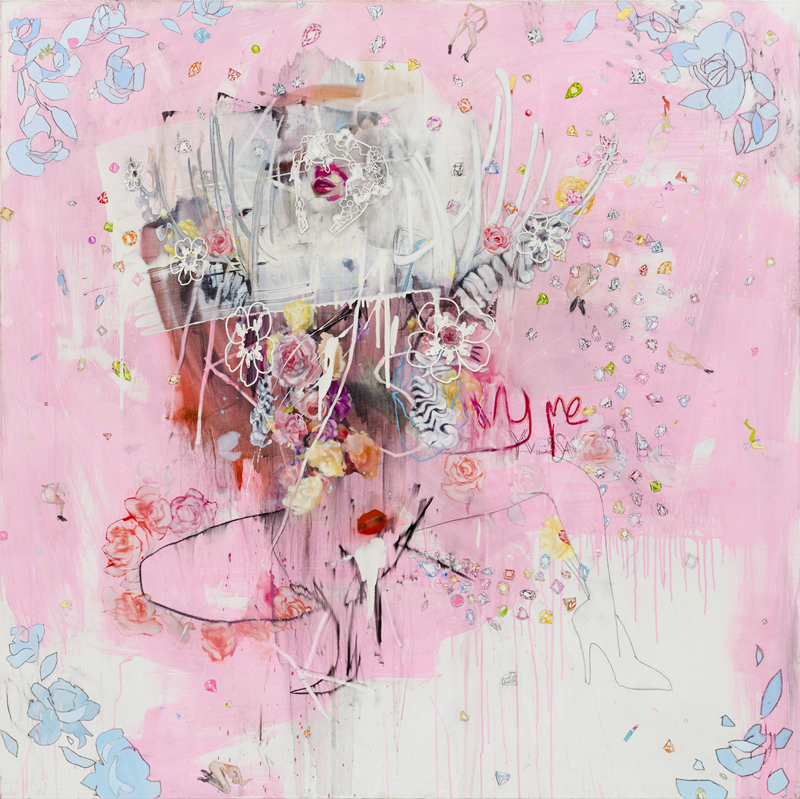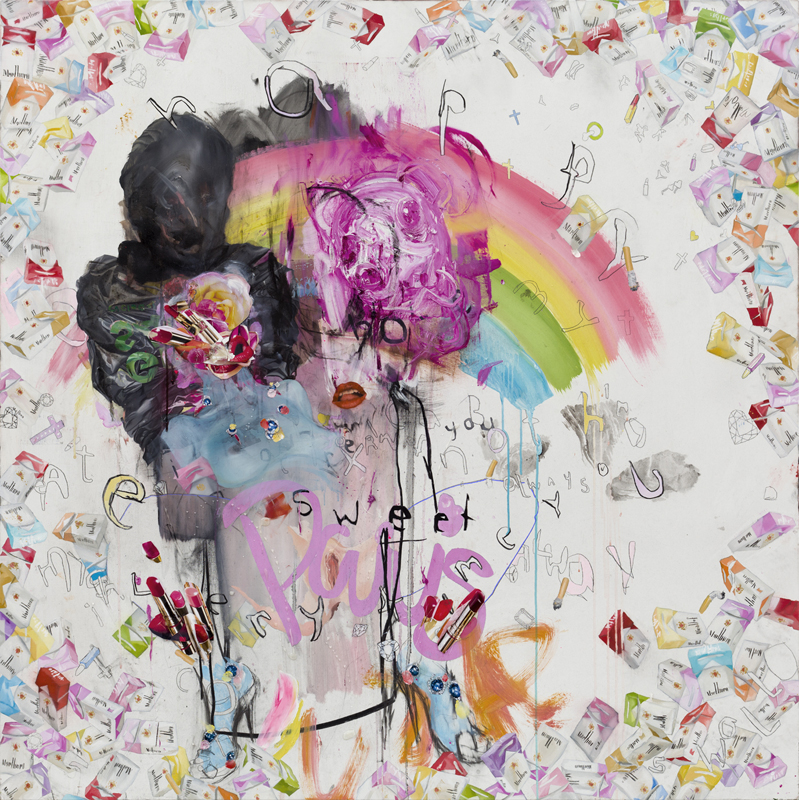Appropriating aspects of consumer culture as raw material for their work is something that artists have been doing well since the consumerist boom of post-WWII years. From the literal approach of Jeff Koons to the gritty recycled found objects of Robert Rauschenberg, artists don’t ever tire of objects that we imbue with mysterious powers, that we use and that we unceremoniously dispose of.

After all, what’s not to like in the glossy surface of advertising? Why wouldn’t the mingling of thrill and guilt brought on by the acquisition of something you don’t need be an appropriate subject for art? Yet, in these lean times of never ending economic misery, fetishising such empty pursuits feels just plain wrong. Has art turned to anti-consumerism to keep up with the zeitgeist or do we just notice it more when we’re looking for distraction from the mindless trap of shopping without funds?
Let’s contemplate for a moment Happy Deep Inside my Heart, the Antony Micallef exhibition at Lazarides in Rathbone Place. The gallery itself specializes in street artists, a market that was non-existent 20 years ago when street art was perceived more as a guerilla practice than as a popular commodity. Of course, things change, the market co-opts all objects or practices for which there might be a demand and artist do not have to starve in order to uphold principles. Yet some use their very entry into the art market as a way to expose its inner workings and to provide a critical stance.

Antony Micallef might just be of this ilk of gentle subversives. His work is part of the biggest collections over the world, well represented in America, big in Japan. It is featured in Vogue, yet it is undeniably deconstructing the vocabulary of beauty and fashion advertising, thus showing the ugly side of lipstick and footwear you never knew existed. Looking at his large scale paintings and his tiny, childish drawings, you could truly believe that Barbie is evil. There is a unique tension between the infantile and soft aspects of his paintings and the dark undertone that creeps to the forefront of the work when you look at it more carefully. No amount of pastel colours, gems and rainbows can hide the violence suggested by psychotic scribbles and the objectification of female body parts, peaking through the saccharine sweet first impression.

We left the gallery with a strange feeling of having seen too much and yet wanting to go back for another look. If this is a criticism of consumerism, why does it turn the empty cycle of identifying with objects into such a dangerous and attractive experience?
(Antony Micallef new solo exhibition is on until October 22nd)













